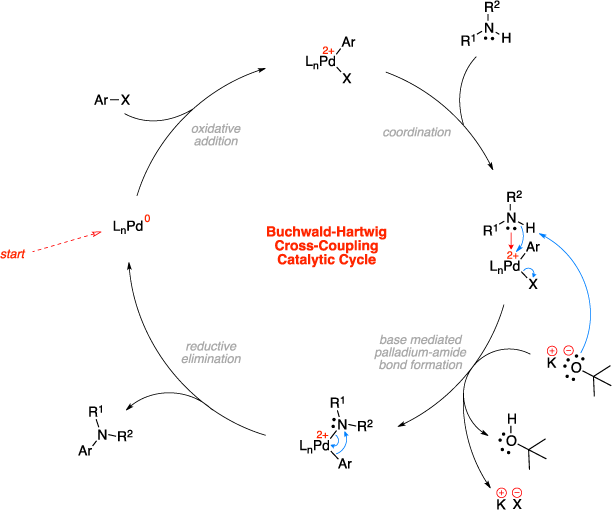Buchwald-Hartwig amination
Also known as: Buchwald-Hartwig cross-coupling

The Buchwald-Hartwig amination is an organic reaction used to make carbon-nitrogen bonds. This is essentially a cross-coupling reaction of an aryl halide with an amine using palladium as a catalyst and a strong base. The reaction begins by oxidative addition of the aryl halide to the palladium which is followed by coordination of the amine to the palladium. The strong base then abstracts a proton from the amine, forming an amide, which in turn attacks the palladium and kicks out the halide as a leaving group. Reductive elimination then produces the final aryl amine product and regenerates the catalyst.[1][2]
Mechanism

References:
| 1. |
Guram, A. S.; Buchwald, S. L.
J. Am. Chem. Soc.
1994,
116,
7901–7902.
|
| 2. |
Paul, F.; Patt, J.; Hartwig, J. F.
J. Am. Chem. Soc.
1994,
116,
5969–5970.
|